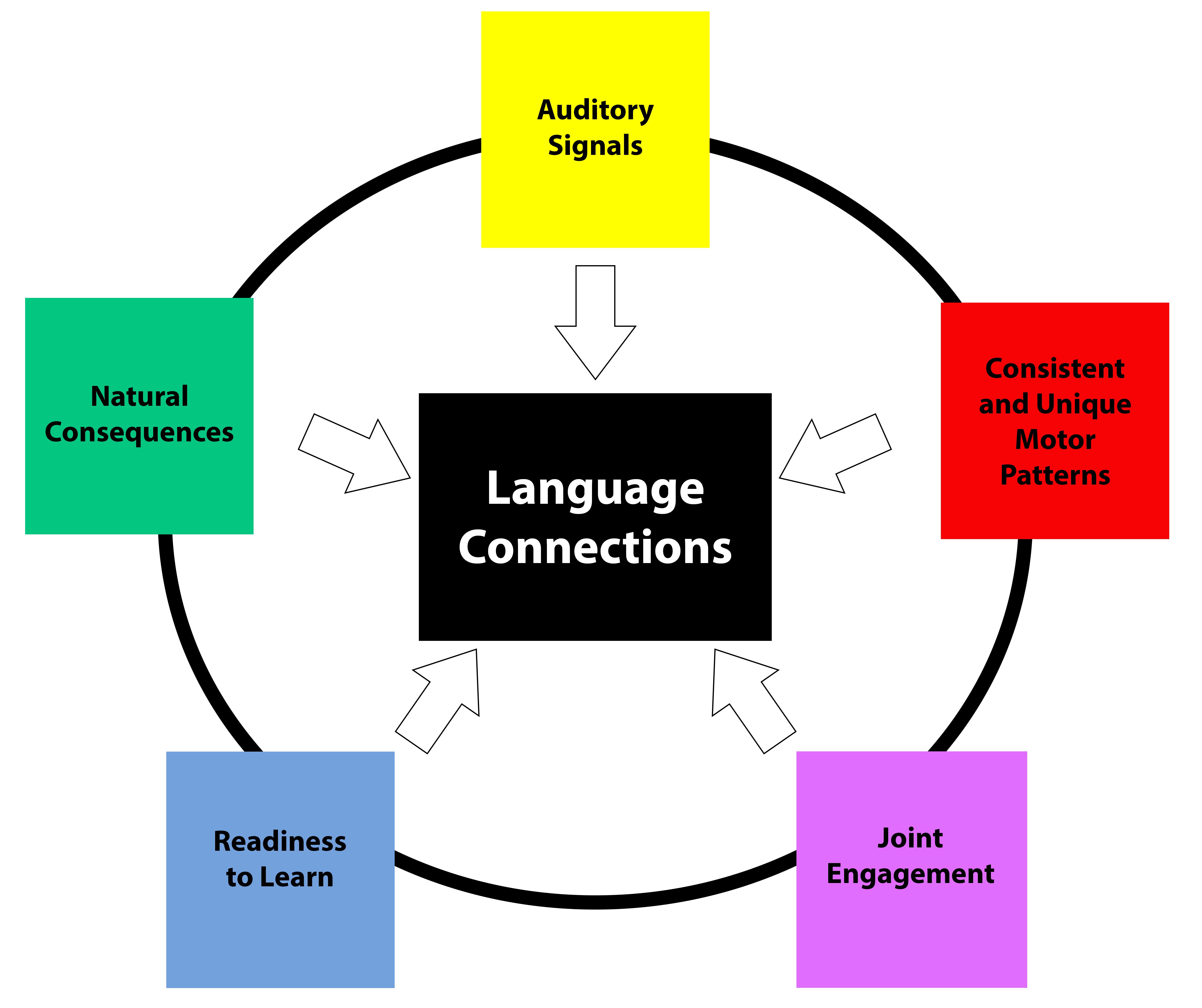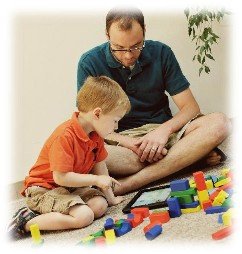What is LAMP?
Language Acquisition through Motor Planning (LAMP)™ is a therapeutic approach using motor learning principles and a voice output communication aid to give non-verbal individuals with autism and other developmental disabilities a method to develop independent and spontaneous communication. Individuals using the LAMP approach learn to use words and build sentences to communicate their wants, needs and ideas by pressing buttons on a speech generating device.
Some interventions currently in use with individuals with autism tend to focus on the perceived strengths associated with autism such as visual learning and the desire for structure. While LAMP utilizes these strengths, it also addresses core deficits affecting language delay such as impaired motor skills, engagement, and auditory and sensory processing to improve spontaneous, generative communication.
LAMP is a Combination of Principles
The LAMP method is a combination of principles related to teaching language and the programming of the device: Readiness to Learn, Joint Engagement, Consistent and Unique Motor Patterns for Words, Auditory Signals and Natural Consequences.

Readiness to Learn
Sensory techniques to help that individual maintain an optimal level of arousal need to be incorporated into treatment sessions. Not only do sensory motor activities help to modulate an individual’s level of arousal, but they tend to be inherently motivating and enjoyable for the child. LAMP Words for Life includes words that can be used during sensory motor activities for emerging communicators!
To keep the individual’s interest, it is necessary to follow their lead in determining the vocabulary to be introduced to match their desire to communicate. Natural, intrinsically motivating activities tend to encourage interactive communication and engagement, while maintaining interest more so than activities that are rote, drill and compliance-based. LAMP Words for Life includes thousands of words so that vocabulary matching the individual's interests can be accessed quickly. Features such as vocabulary builder make finding those words easy!
Joint Engagement
 Joint Engagement occurs when two individuals are interacting together while focused on the same object or activity. Research indicates that the amount of joint engagement is directly related to language and communication development. Communication partners should teach vocabulary by following the learner’s lead, building on their interests and sharing in surprising, fun activities.
Joint Engagement occurs when two individuals are interacting together while focused on the same object or activity. Research indicates that the amount of joint engagement is directly related to language and communication development. Communication partners should teach vocabulary by following the learner’s lead, building on their interests and sharing in surprising, fun activities.
Consistent and Unique Motor Patterns
The primary principle of the LAMP approach is that the motor plan to say a word on an AAC device is consistent across time and unique from other words. When verbal individuals talk, they don’t have to concentrate on how to make the sounds that make up words; they concentrate on the idea of what they want to convey. The same principle holds true with an augmentative communication device. Communication cannot happen efficently on an AAC device if attention must be paid to icons, categories and navigating to vocabulary.
Our brain develops motor plans to control movements that are used over and over again so that they may occur automatically without much thought. Examples of everyday activities for which we use motor plans include typing, writing and articulating words. Accessing words on a device with a unique and consistent motor plan allows for fast, natural and fluent communication to develop over time. It also allows language to be taught without waiting for skills such as cause/effect, picture discrimination, or literacy. These skills can be taught simultaneously to teaching language.
Auditory Signals
Auditory Signals on a device occur when a button is pressed and the device speaks the word using a computerized voice. This feedback helps the learner understand how sounds are connected to motor movements to produce words, a critical component in natural language development.

Natural Consequences
Natural Consequences occur when an individual presses a button on their device and a communication partner reacts accordingly. For example, if a child says “eat,” he/she may be given something to “eat,” a peer could “eat” or a puppet could pretend to “eat.” Responding to communication attempts on the device helps the device user learn that their words have meaning.
Language Connections
To allow for independent communication, the AAC system shoud be single word based. As with typical language development, communication usually starts at the one word level. This allows the communicator to understand the meaning of individual words before putting words together in phrases and sentences. Access to individual words, allows the communicator to express their own thoughts rather than relying on a prestored phrase someone else predicted they might want to use. It allows for natural language development.
Communication Success Stories
Read how the LAMP method has changed lives by creating independent and spontaneous communication: